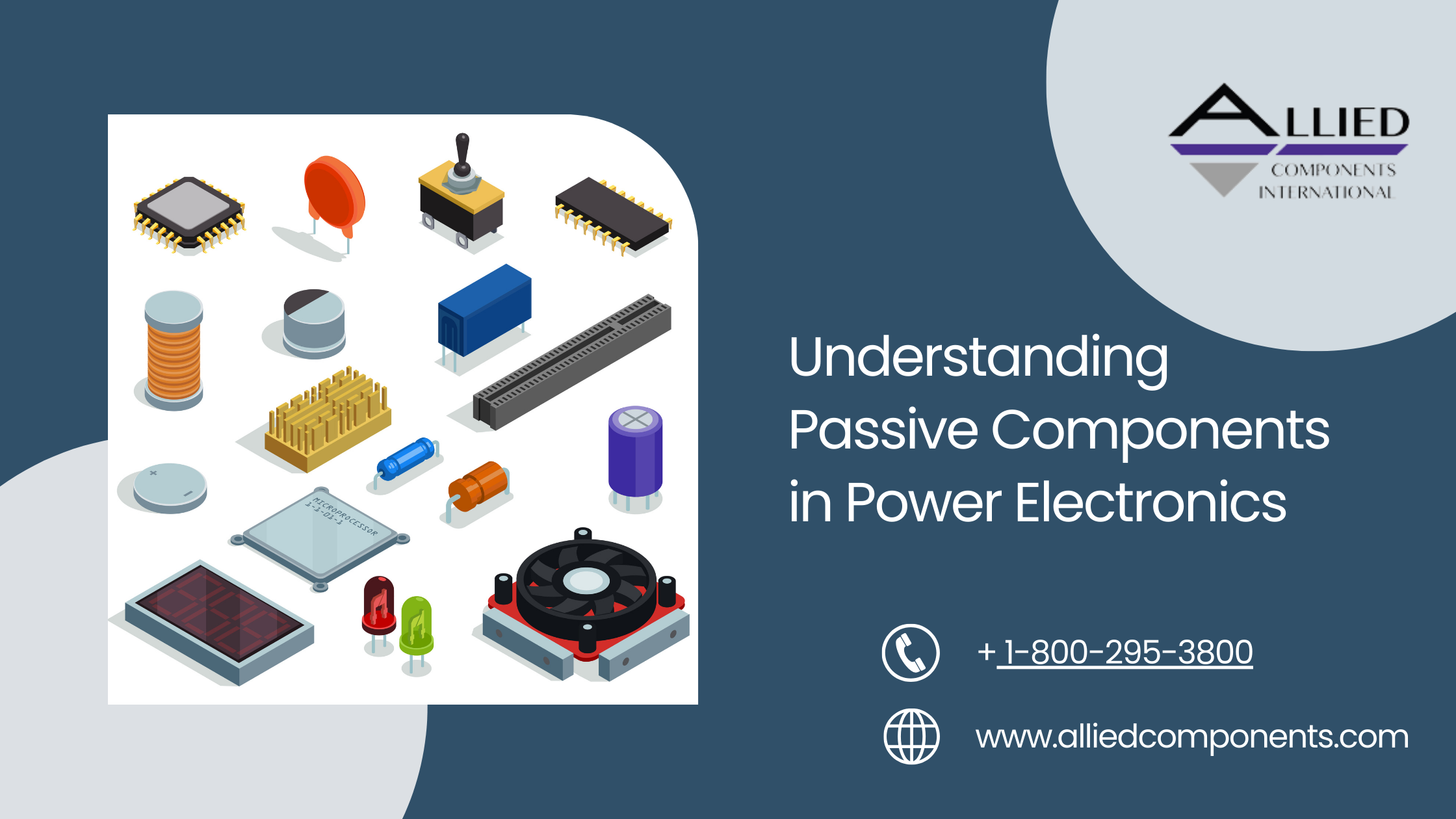Understanding Passive Components in Power Electronics

In today's high-tech age, power electronics play a crucial role in efficiently controlling and converting electrical power. From our everyday devices like smartphones to the grand scale of renewable energy systems, power electronics play an important role. However, while active components such as transistors and diodes often attract more attention, this blog aims to highlight the often-overlooked, equally crucial players in this realm—passive components in electronics.
Understanding Passive Components
Before we delve deeper into the role of passive components in power electronics, let's learn more about what passive components are. In electronics, passive components include resistors, capacitors, and inductors. These components don't actively amplify or control electrical signals as active components do, but they possess unique characteristics that make them fundamental to shaping and supporting electrical circuits. Some of these characteristics include impedance, reactance, and frequency response.
Role of Passive Components in Power Electronics
Now that we've introduced passive components, let's explore their specific roles within power electronics:
- Resistors: Resistors are foundational components used to control the flow of electrical current. They perform tasks like current limiting, voltage division, and power dissipation. These seemingly simple components are vital in ensuring circuits operate safely and efficiently.
- Capacitors: Capacitors serve as power electronics' voltage stabilizers. They excel at smoothing out voltage fluctuations, a process known as filtering. This smoothing function enhances the reliability of the entire system, ensuring it operates consistently.
- Inductors: Inductors are energy storage devices that generate magnetic fields and filter out unwanted noise. These properties make them invaluable in power electronics, as they play a significant role in energy storage, magnetic field generation, and filtering.
Applications of Passive Components in Power Electronics
Now, let's explore how passive components find their way into various applications within the power electronics domain:
- DC-DC Converters: In voltage regulation and conversion, passive components play a crucial role. They are integral to step-up (boost) and step-down (buck) converters, which are essential for various electronic devices.
- AC-DC Converters: When rectifying alternating current (AC) input and reducing ripple and harmonics, passive components take center stage. Filtering is an integral part of these converters, and passive components are at the heart of this process.
- Filters in Power Electronics: Noise and harmonics are common challenges in power systems. Passive filters come to the rescue, mitigating these issues and ensuring clean power distribution. Different types of passive filters are employed to achieve specific filtering objectives.
Challenges and Considerations
While passive components are irreplaceable, their selection is not a one-size-fits-all affair. Considerations must be made regarding factors like power ratings, voltage ratings, and frequency. Selecting the suitable passive component for a specific application can be the difference between a reliable system and one fraught with issues.
Additionally, thermal management is a significant concern. Passive components can generate substantial heat, especially when subjected to high power loads. Proper thermal management is crucial to ensure the reliability and longevity of these components.
Advancements and Trends
The world of electronics is always evolving, and passive components are no exception to this rule. Here are a couple of noteworthy trends:
- Miniaturization: Passive component miniaturization is revolutionizing power electronics design. Smaller components offer advantages like reduced space requirements and improved efficiency but also present challenges regarding heat management and precision assembly.
- Integration with Active Components: Another intriguing trend is the integration of passive and active components on the same substrate. This integration not only reduces the footprint but also enhances the overall performance of the system. The synergy between passive and active members results in more efficient and compact designs.
Conclusion
In the grand tapestry of power electronics, passive components may not always steal the spotlight, but they are undoubtedly the unsung heroes, making efficient, reliable, and high-performance systems possible. As technology continues its relentless march forward, its importance remains exhaustive. To harness the full potential of passive components, it is crucial to select them wisely and manage their thermal effects carefully. In doing so, we pave the way for a brighter, more electrifying future. These components are the backbone of power electronics, making sure our devices and systems operate seamlessly in the digital age. So, the next time you power up your device or plug in your electric vehicle, remember the silent giants—passive components—that make it all possible.
Discover Top-Notch Integrated Circuits at Allied Component International
At Allied Component International, we excel in crafting tailor-made IC solutions to meet your specific application needs. With a team of seasoned engineers by your side, we're committed to helping you design the ideal integrated circuit for your requirements. Contact us today to learn more!


